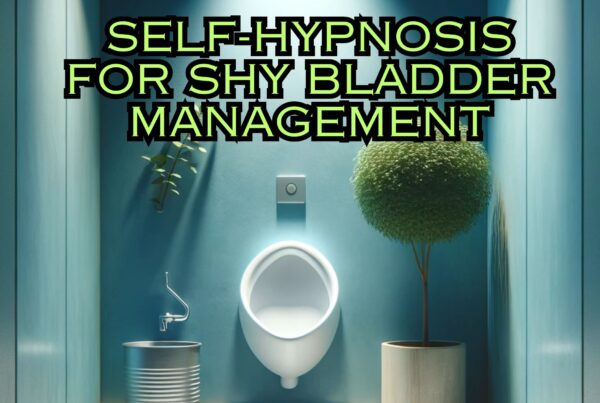How to Use Self Hypnosis to Reduce Pain
It's often said that the mind is a powerful tool. This statement is increasingly substantiated when it comes to the management of pain. This blog post will delve into the fascinating topic that highlights how to use self hypnosis to reduce pain. A journey into the realm of the mind will be undertaken, armed with tools from scientific research, evidence, and years of clinical practice.
Understanding Self Hypnosis
The technique of self-hypnosis may conjure up images of stage performers and spinning wheels. However, in truth, it's a practical and scientifically validated approach for managing discomfort. Hypnosis is defined as a state of focused attention and increased suggestibility (Oakley & Halligan, 2009). In self-hypnosis, an individual guides themselves into this state. It's akin to a private meditation session, but with a twist. It is a guided tour into one's own subconscious, a voyage undertaken by oneself.
Self Hypnosis and Pain Perception
Self hypnosis as a tool for pain reduction is not a new concept. Research has shown that it alters the way our brains perceive and interpret discomfort (Jensen et al., 2015). Think of it as an artist who turns a blank canvas into a masterpiece. Only in this scenario, the canvas is your mind and the artist, your subconscious. The raw materials (pain signals) remain the same, but the end product (perceived pain) is vastly different.
The Role of the Mind in Pain Perception
A closer look at the science behind pain might help to unravel the potential of self-hypnosis. It has been found that pain is not solely a physical phenomenon. A key player in the pain game is the mind itself (Melzack & Wall, 1965). Picture this - the mind is like a busy traffic junction. Sensations of pain are akin to the cars driving through this junction. Sometimes, there are traffic jams, leading to a build-up of cars (or pain signals). Hypnosis, in this context, serves as an efficient traffic controller, helping to manage and even reroute this traffic of pain signals.
Taking Control through Self Hypnosis
The power to control one's pain through self-hypnosis might seem like a tall order. But research supports the ability of individuals to learn and apply these techniques effectively (Montgomery et al., 2000). Imagine being the captain of your ship, steering through the stormy seas of pain. The waves might be high, and the winds might be fierce, but with the right skills, the course can be adjusted and the journey can become more manageable.
Guiding Yourself into Hypnosis
So how does one get started on this exciting voyage? A typical self-hypnosis session begins with deep relaxation. This stage is equivalent to setting the sail, tuning out distractions, and focusing on the journey ahead. With practiced imagery and language, you, the captain, can guide your ship into calm waters (the hypnotic state). Once in this state, suggestions tailored to reduce the perception of pain can be made.
Just as a traveler uses a map, self-hypnosis relies on mental imagery. It could be as simple as imagining the pain as a volume knob that can be turned down. Or perhaps visualizing the discomfort as an unwelcome guest, whom you calmly and firmly show the door. The key is in the choice of imagery that resonates with you and supports your pain management.
Hypnosis Research in Pain Management
Does it sound too good to be true? It might seem so, but scientific research supports the efficacy of hypnosis for pain management. Studies have shown reductions in pain intensity, anxiety related to pain, and even the need for pain medication (Jensen & Patterson, 2006). A journey into the subconscious is not a journey into the unknown, but a well-charted voyage backed by empirical evidence.
As you embark on this intriguing journey of self-discovery and pain management through self-hypnosis, remember that everyone's journey is unique. Your mind, like a vast ocean, holds unique landscapes and routes. You are the captain of this ship, and self-hypnosis provides you with the compass to navigate through the choppy waters of pain.
Using Assistance For Self-Hypnosis
Some people might like to explore a process for self hypnosis while others may prefer to use pre-recorded content to help guide them through the experience. There are several options, and the choice is yours.
Release Hypnosis Melbourne Hypnotherapy
Since 2016, Lawrence Akers has been working under the name Release Hypnosis offering Hypnotherapy and ACT based work to the people of Melbourne or an online service. Based on St Kilda Rd, Release Hypnosis is an easy and convenient location to get to and accessible by the ANZAC station train and tram stop. Release Hypnosis can help with a wide range of presenting issues, and I offer a free 30 minute no obligation discovery call for those who are unsure if hypnotherapy is the right way forward for them.
Book Your FREE 30 Minute Consultation With Release Hypnosis NOW!
References for 'Self Hypnosis to Reduce Pain'
1. Oakley, D. A., & Halligan, P. W. (2009). Hypnotic suggestion and cognitive neuroscience. Trends in cognitive sciences, 13(6), 264-270.
2. Jensen, M. P., Jamieson, G. A., Lutz, A., Mazzoni, G., McGeown, W. J., Santarcangelo, E. L., ... & Terhune, D. B. (2015). New directions in hypnosis research: strategies for advancing the cognitive and clinical neuroscience of hypnosis. Neuroscience of consciousness, 2015(1).
3. Melzack, R., & Wall, P. D. (1965). Pain mechanisms: a new theory. Science, 150(3699), 971-979.
4. Montgomery, G. H., DuHamel, K. N., & Redd, W. H. (2000). A meta-analysis of hypnotically induced analgesia: how effective is hypnosis? International Journal of Clinical and Experimental Hypnosis, 48(2), 138-153.
5. Jensen, M. P., & Patterson, D. R. (2006). Hypnotic treatment of chronic pain. Journal of behavioral medicine, 29(1), 95-124.
You may also like to read:
Discovering Purpose and Values: A Path to Mental Well-being
Can’t Visualise in Hypnosis? Here’s What You Can Do Instead.
Dealing with Financial Stress and Crisis: Finding Peace Amid Turbulence
What Is The Success Rate of Hypnosis?








